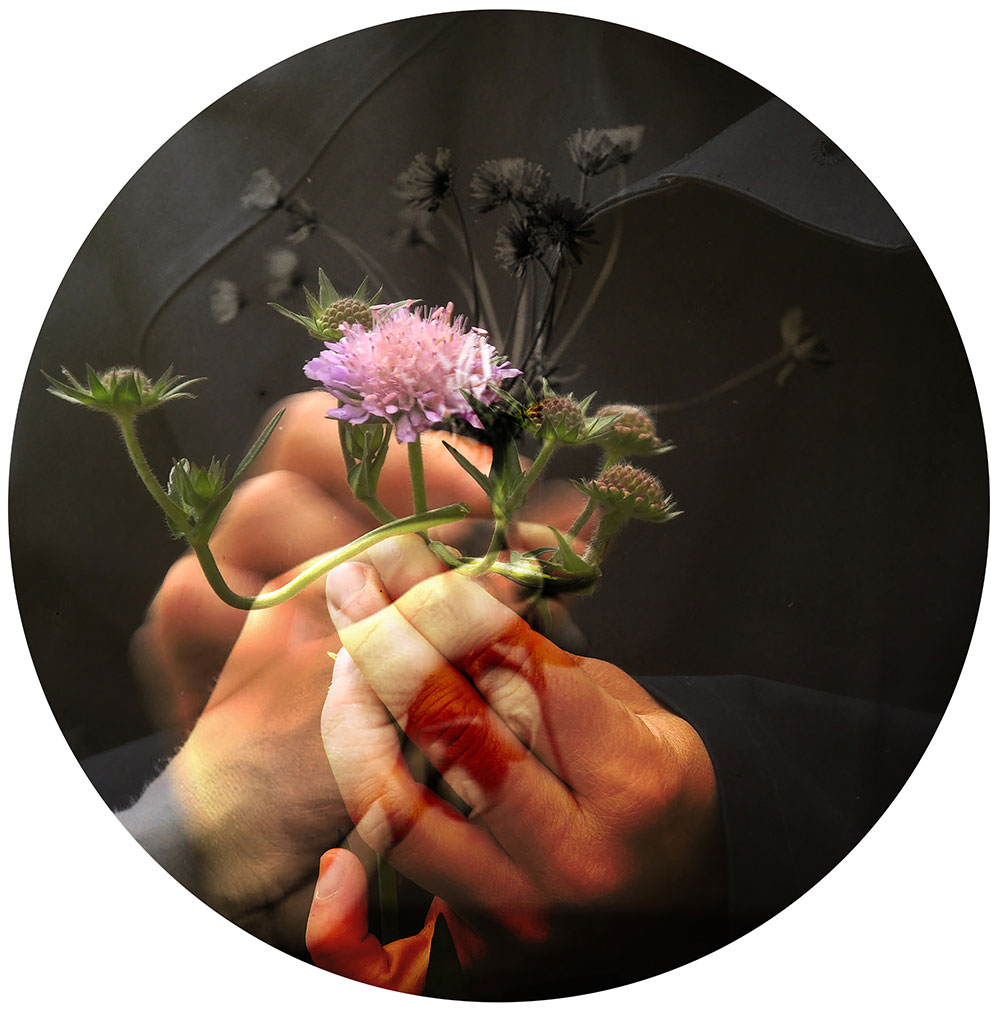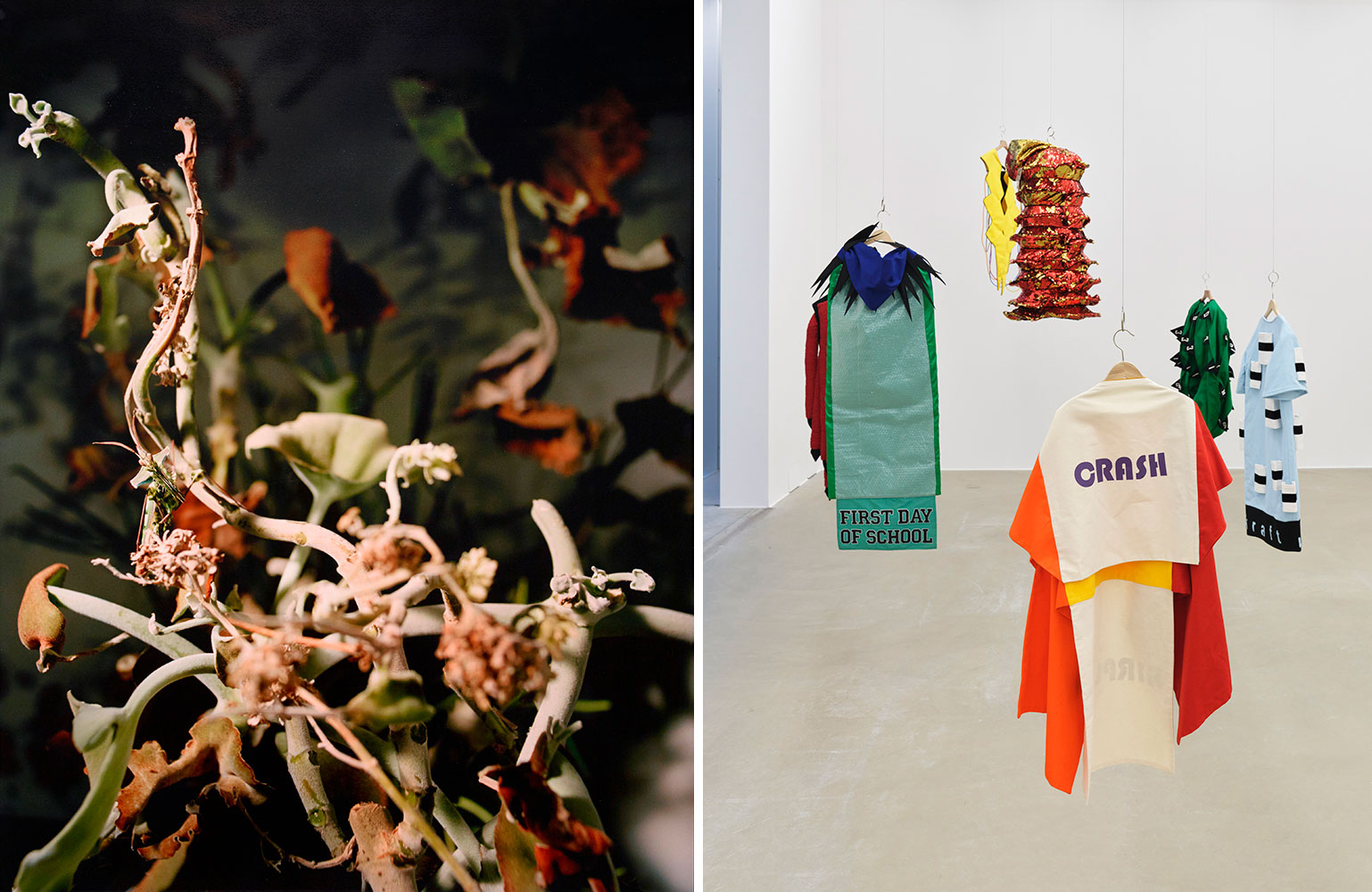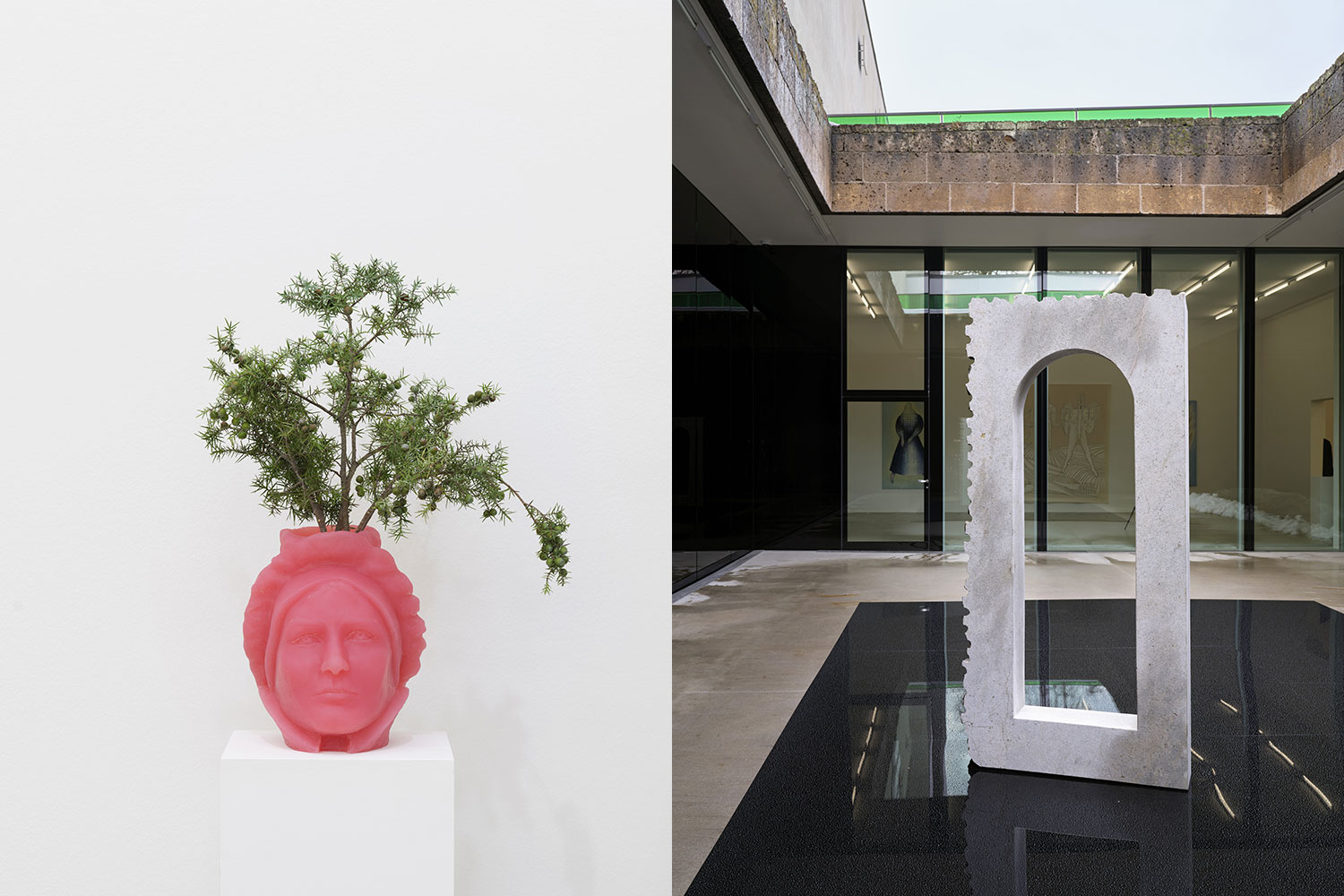ART-PRESENTATION: Emma Kunz Cosmos
 Emma Kunz (1892-1963), was known as a natural healer all her life and described herself as a researcher. She has now acquired an international reputation as an artist who created an incomparable artwork. Emma Kunz left behind a comprehensive legacy of artwork consisting of around 400 drawings. The legacy was first made available to the public in 1973 thanks to Prof. Heiny Widmer, the director of the Aargauer Kunsthaus art gallery at the time, and created a sensation in the art world.
Emma Kunz (1892-1963), was known as a natural healer all her life and described herself as a researcher. She has now acquired an international reputation as an artist who created an incomparable artwork. Emma Kunz left behind a comprehensive legacy of artwork consisting of around 400 drawings. The legacy was first made available to the public in 1973 thanks to Prof. Heiny Widmer, the director of the Aargauer Kunsthaus art gallery at the time, and created a sensation in the art world.
By Efi Michalarou
Photo: Aargauer Kunsthaus Archive
In the exhibition “Emma Kunz Cosmos-A Visionary in Dialogue with Contemporary Art”, fifteen international artists engage in a dialogue with sixty works of Emma Kunz, including numerous unknown drawings. “My images are intended for the 21st century”, Emma Kunz is once said to have predicted. The augury of the researcher, naturopath and artist from Brittnau in the Canton of Aargau seems to be coming true. Her drawings, presented to the public for the first time in the Aargauer Kunsthaus in 1973. Many artists are also interested in Emma Kunz. Both inside and outside of Switzerland, they see her as a formative figure. They engage with Kunz’s drawings, made with pendulum, compass and ruler, or with her work as a researcher; they refer to her healing and clairvoyant abilities or to her holistic approach in understanding humanity, nature and art as a continuum. The exhibition takes both, fascination and attention, as its theme. The dialogue with works of contemporary art creates a convergence and a contextualisation that go beyond Kunz’s visual creations and shed a new light on the work of this personality as a whole. Fifteen contemporary artists are presenting their works in an enhanced confrontation with the influence of Emma Kunz. Many of these works have been created especially for the exhibition. They encompass a great variety of media and clearly reach beyond the formal visual and aesthetic level of the drawings. The frame of reference contains specific themes from Emma Kunz’s field of activity as well as her personality and working method. The networks of lines in Emma Kunz’s drawings symbolise the cosmos that the exhibition opens up from a resolutely contemporary perspective.
Emma Kunz lived in rural Switzerland and considered herself to be primarily a healer and researcher of nature. Discovering her telepathy and extra-sensory powers as a child, she began using her gifts at the age of 18, when she also started to draw in exercise books. She never received an arts education, yet in her lifetime she produced hundreds of geometric drawings. They were visions of energy fields from which she could formulate diagnoses for her patients who would visit her seeking help for physical and mental ailments. From 1938, while in her forties, she first began making large-scale drawings, which she would continue for the rest of her life, using radiesthesia, a drawing technique where a divining pendulum plots the complex and linear compositions of her drawings made on graph paper. Working primarily with graphite and color pencils, Kunz would work intensely and continuously on each drawing for a period that could stretch over 24 hours; however, she never recorded their particular meaning and none are dated or titled. Parallel to her drawings, Kunz was a naturopath and she discovered a healing rock AION A in a Roman quarry in Würenlos, the site today of the Emma Kunz Zentrum and Grotto. The rock is still sold in chemists in Switzerland, mined from the same quarry, and used to treat a host of health issues from joint and muscular pain to inflammatory skin disorders. She also used the pendulum to polarise marigolds in her garden to produce multiple flower heads and documented the result with extraordinary photographs. Geometric abstraction became a means for structuring and visualising her philosophical and scientific research which was not only rooted to her own times and the pursuit of her own restorative practices, but also for the future.
Agnieszka Brzeżańska is interested in the mystical as it is found in everyday life. In her paintings, photographs and films she explores allusions to physics, astronomy, theosophy and mathematics. Emma Kunz is a recurring reference in her work. In Aarau, alongside a series of existing works, she is showing new paintings that visualise the birth horoscopes of people important to her. Dora Budor creates reactive machines whose shapes – in indirect relation to Emma Kunz’s drawings – are guided by invisible forces. Budor is equally inspired by science fiction and its staging in cinema and the overwhelming hybridisation of nature by human beings. The exhibited work comes from the Origin series and resembles a cross between a nature-studies display, a laboratory incubator and an industrial test chamber. In its inner enclosure it periodically emits dust and pigments whose colours and movement recall the atmosphere of William Turner’s historical paintings. Sirah Foighel Brutmann & Eitan Efrat propose poetic re-evaluations of historiography in their collaborative work. They create spatial and temporal experiences that refer to film and architecture, and develop their own audiovisual languages, which do not generally follow linear narratives. Taking as their starting-point the film The Magic Mountain, on which the artist duo collaborated with the British author and fier Daniel Mann, they further explore material about the Emma Kunz Grotto in Würenlos and Kunz’s marigold experiments. Athene Galiciadis is passionate about translating old traditions and craft techniques into contemporary art. To achieve this she uses a great variety of materials, from wood to Plexiglas, to develop a geometrical formal language of her own. In 2018 she published “An Acrylic Glass Pyramid and Three Pendulums Attached to a Triangle on a Table”, for which she engaged with Emma Kunz’s method of drawing and converted it into a digital procedure. Based on this publication Galiciadis is making “Traces” (2021), a new installation for the exhibition, in which linear forms are inscribed in the plaster on the wall like artifacts of an unknown time and culture. Florian Graf has – since 2016 and under the label FG Artists Service Group – offered various services including some of a spiritual and psychological nature. In this way he reflects upon the curious roles of artists in our society. In his latest work these offerings, captured in around eighty visualised concepts, mirror the practice of Emma Kunz against the background of an extended concept of art as we understand it today.
Joachim Koester investigates – starting from events in mysticism and the occult as well as surreal moments in our cultural and social history – the ways in which our shared histories are established. He weaves facts and fictions, reality and myth together into his conceptually-based works. In “Tarantism” (2007) he explores the Southern Italian folk dance, the Tarantella. Its origins are based on the idea that the bite of a tarantula prompts a compulsive need to dance. The film screening is complemented by photographs in which Koester documents praying mantises, which are supposedly able to connect with the mind of the person observing them. Goshka Macuga’s attention is particularly drawn to influential women such as Helena Petrovna Blavatsky, the founder of the Theosophical Society, to whom the sculpture entitled “Madame Blavatsky” (2007) is dedicated. In her installations, filled with historical and theoretical references, Macuga addresses the question of what an alternative historiography might look like. Apparently solid knowledge becomes unstable. She is interested in Emma Kunz as a visionary who has received little acknowledgment during her lifetime, a fact to which Macuga refers in her newly created work. Shana Moulton investigates the interaction of consumer culture with the diverse manifestations of spirituality in the 20th and 21st centuries. She works with the aesthetic of products from the fields of ‘wellness’, health and cosmetics. In her videos and installations she places herself in the role of her alter ego Cynthia, who moves in an over-aestheticised world of self-optimisation. In her video work “Restless Legs Saga” (2012), the protagonist suffers from Restless Legs Syndrome, and seeks a remedy in pharmaceutical advertising, finding it in the healing mineral Aion A, discovered by Emma Kunz. Rivane Neuenschwander involves the public in spontaneous, participatory experiments, seeking to encourage a collective consciousness of social phenomena. At the same time she explores the consequences of chance, control and collaboration within specific thematic areas such as language, geography and social interaction. In the large group of works entitled “The Name of Fear” she takes drawings in which children have depicted their anxieties and turns them into protective, ‘healing’ capes. For Aarau, she has worked with local schools to create a new chapter in this complex of works. Mai-Thu Perret combines feminist politics with literary texts and crafts with a 20th-century avant-garde aesthetic. Her work is multidisciplinary and installation- and performance-based. Her central concepts include social utopias, fiction and reality, as well as authenticity and autonomy. Perret frequently engages with historical artistic figures, just as she does with the creative work of Emma Kunz. For this exhibition, she is making a new neon work, in which she refers to a drawing by Emma Kunz.
Lea Porsager is showing the immersive 3D animation and installation “CØSMIC STRIKE” (2018). In it, she explores the intersections between quantum theory and spiritual paradigms – a surprising combination. Her artistic practice is strongly influenced by scientific concepts involving energies, spiritual cosmologies, occult practices and feminism. She uses media such as film, sculpture, photography and text in her works. Tabita Rezaire brings media art, activism and technology policy together with the theories of Kundalini yoga. Her holistic practice is devoted to the concept and activity of healing at the meeting-point between digital technology and spirituality. Rezaire describes her works as attempts at ‘de-colonial healing’, with which she attempts to break through colonial and hegemonic western logic, particularly in the digital world. Mathilde Rosier’s works take a vital interest in ancient rites and rituals, exploring their physical and psychical experience. She combines painting, film, dance and theatre to create situations that cannot be conveyed through language. For her most recent works, she transfers this activity to the relationship between humanity and nature, and presents paintings and drawings in which mystical representations of animals and nature are presented as agents within a parallel reality. Lauryn Youden captures traces of her performance ceremonies in her objects and texts. In them, she engages with modern western medicine as well as the practices of alternative healing. Her staging of these healing practices provides a feminist-influenced vision of the history of medicine. In the courtyard of the Aargauer Kunsthaus, she is making an installation that connects with the ‘place of strength’ that is the Emma Kunz Grotto.
Photo: Sirah Foighel Brutmann & Eitan Efrat, Meeting a Flower Halfway, 2021, HD-Video, round projection frames, 14′20’’, Loop (Videostill), Courtesy Sirah Foighel Brutmann & Eitan Efrat
Info: Curator: Yasmin Afschar, Assistant Curators: Sabrina Negroni and Bettina Mühlebach, Aargauer Kunsthaus, Aargauerplatz, Aarau, Duration: 2/3-24/5/2021, Days & Hours: Tue-Wed & Fri-Sun 10:00-17:00, Thu 10:00-20:00, www.aargauerkunsthaus.ch




Right: Rivane Neuenschwander (in collaboration with Guto Carvalhoneto and Lucas Nascimento), The Name of Fear, 2013, Installation view Aargauer Kunsthaus-Aarau, 2021, Photo: Conradin Frei-Zurich, Courtesy Aargauer Kunsthaus


Right: Lauryn Youden, Peering through a Half-Open Door, 2021, Sandstone from the Roman quarry, black Plexiglas, black window film, Mass variable, Courtesy of the artist, Installation view Aargauer Kunsthaus-Aarau, 2021, Photo: Conradin Frei-Zurich, Courtesy Aargauer Kunsthaus


